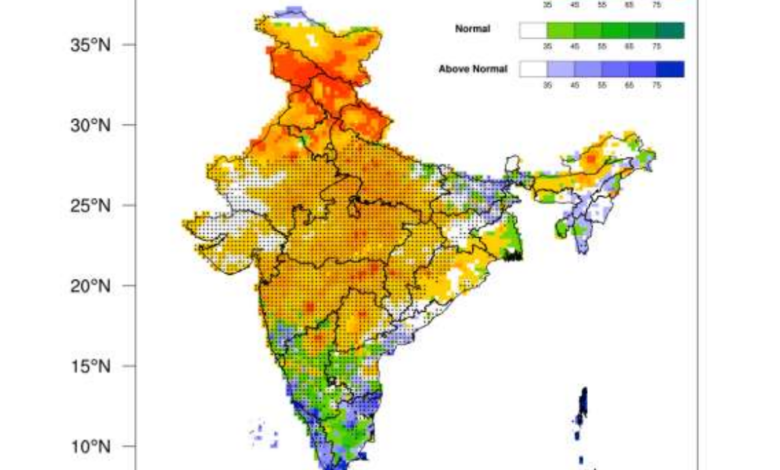Above-normal max temps expected during summer in north, west India
During March, normal to below normal minimum temperatures are most likely over most parts of India


a) Temperature – During the upcoming hot weather season (March to May (MAM)), normal to above normal minimum temperatures are most likely over many parts of northwest India, most parts of northeast India, some parts of central India, east coastal region and some areas along the foothills of the Himalayas. Above normal maximum temperatures are most likely over many areas from west and adjoining areas of central India, northwest India and northernmost parts of northeast India. However, below normal maximum temperatures are likely over most parts of the south peninsula and east and northeast India and northern plains.
During March, normal to below normal minimum temperatures are most likely over most parts of India except some parts of eastern, southeastern & northwestern peninsula. Normal to below normal maximum temperatures are likely over most parts of the south peninsula and east and northeast India whereas above normal maximum temperatures are most likely over many parts of western and central India.
b) Rainfall – The rainfall in March 2022 averaged over the country is most likely to be normal (83-117% of LPA). Below normal rainfall is most likely over most areas of northwest and central India and some parts of northeast India. Normal to above normal rainfall likely over many parts of south Peninsula.
c) SST Conditions – Currently, La Niña conditions are prevailing over the equatorial Pacific region. The La Niña is likely to weaken during the northern hemisphere spring season and to reach cold ENSO neutral conditions during the second quarter of 2022. At present, neutral IOD conditions are present over the Indian Ocean and the latest MMCFS forecast indicates that the neutral IOD conditions are likely to continue during the northern hemisphere spring and summer seasons.
As the changes in the sea surface temperature (SST) conditions over the Pacific and the Indian Oceans are known to influence the Indian climate, IMD is carefully monitoring the evolution of sea surface conditions over these Ocean basins.




